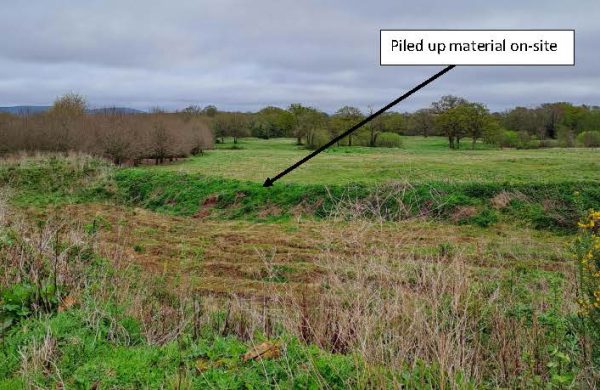Golf Course Regeneration gets out of the Rough
30th July 2024
Geoenvironmental
Our Client

Preliminary-Assessment
This would require us to establish the types and volumes of materials present. This information was needed to quantify how much of each material was on-site, and how best to re-use or dispose of them. To determine this, laboratory testing would also need to be undertaken.
Our Challenge
- What the materials dumped across site were
- The volumes of the dumped materials on-site
- If it was safe to re-use the materials dumped on the site
- If not… What was the waste classification for removal?
The Ground & Water Approach
 To complete the investigation, sixteen trial pits were excavated to a depth of 1.00m bgl. A sample from each of these (at various depths) and scheduling was undertaken to determine if there was any contamination for a POS (public open space) and also the WAC (waste acceptance criteria). From the initial site investigation, four separate soil types were identified. These had been removed from another area close to the site and left in large piles across the proposed golf course. The materials noted are below:
To complete the investigation, sixteen trial pits were excavated to a depth of 1.00m bgl. A sample from each of these (at various depths) and scheduling was undertaken to determine if there was any contamination for a POS (public open space) and also the WAC (waste acceptance criteria). From the initial site investigation, four separate soil types were identified. These had been removed from another area close to the site and left in large piles across the proposed golf course. The materials noted are below:
- MADE GROUND: Grass over brown silty gravelly CLAY. Gravel is fine to coarse, angular to sub-rounded of flint, brick, chalk, concrete, wood, and metal.
- REWORKED GROUND: Grass over grey slightly gravelly SAND. Sand is fine to coarse. Gravel is fine to coarse, sub-angular to sub-rounded of flint.
- REWORKED GROUND: Grass over brown grey slightly silty gravelly CLAY. Gravel is fine to coarse, sub-angular to sub-rounded of flint.
- TOPSOIL: Brown silty, slightly gravelly SAND.
Laboratory Testing and Analysis
Ten samples were sent for numerous ground and water suites. These tests were to see if there was any contamination within the different soil types, helping the client understand what can be done. The results of the chemical laboratory testing indicated no elevated levels of determinands exceeding the Generic Assessment Criteria (GAC) for a ‘Public Open Space land-use scenario. Therefore, the material used was chemically suitable for the site, with respect to a wide range of contaminants.
The WAC testing showed that the materials were non-inert.
The Outcome
- The material was defined and logged on-site
- The volume appraisal was undertaken, showing the approximate volume for each of the materials encountered
- It was confirmed by the chemical testing, a Definition of Waste Code of Practice would be required for re-use
- If removed from site WAC testing showed that the material was non-inert.
This site investigation gave our client everything they needed to go forward with their project. They will be able to either re-use the material on site (with the correct re-use document) or remove the waste. They have the volume of each material, and now understand their site, along with the next steps, thanks to the Ground & Water investigation.